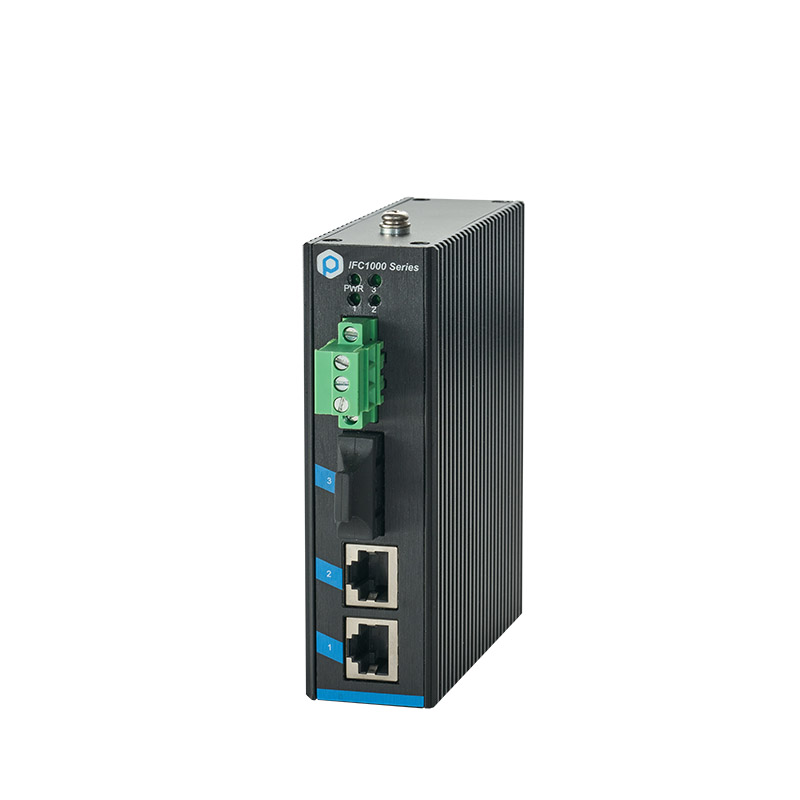Industrial media converters are devices used to convert electrical signals into optical signals and transmit data through optical fibers. They are widely used in the industrial field, especially in scenarios that require long-distance networking. The following are the main principles and steps for industrial media converters to achieve long-distance networking:
1. Optical signal conversion: Industrial media converters convert electrical signals into optical signals through optoelectronic conversion technology. The sending end in the media converter converts electrical signals into optical signals and sends them out through the fiber optic. The receiving end converts the optical signal back into an electrical signal to enable the data to be understood and processed by the connected device.
2. Fiber optic transmission: Fiber optic is a transmission medium with low loss and high bandwidth. By using fiber optic as the transmission medium, industrial media converters can achieve long-distance signal transmission. Optical signals are transmitted in the form of light in optical fibers, covering distances of tens or even hundreds of kilometers without being affected by signal loss.
3. Relay and Gain: In long-distance networking, it may be necessary to enhance the transmission capability of optical signals through repeaters and amplifiers. Repeaters can transmit optical signals from one fiber to another, extending the transmission distance. The amplifier can amplify and compensate for optical signals to increase their transmission distance and quality.
4. Fiber optic connection and wiring: In order to achieve long-distance networking, it is necessary to correctly connect and wire the fiber optic. Fiber optic connections are usually made through fiber optic connectors to ensure the reliability and stability of the connection. Fiber optic cables need to be properly laid and wired to avoid loss and interference of optical signals.

Based on the above principles and steps, industrial media converters can effectively achieve long-distance networking, provide high-speed and reliable data transmission, and meet the needs of the industrial field for long-distance communication. Here are several methods to achieve long-distance networking:
1. Use single mode fiber: Single mode fiber has smaller transmission loss and higher bandwidth, making it suitable for long-distance transmission. Industrial media converters typically support single mode fiber optic interfaces and utilize their transmission performance to achieve long-distance networking.
2. Use enhanced transceivers: Enhanced transceivers have higher transmission power and more sensitive reception sensitivity, which can increase the fiber optic transmission distance. By using enhanced transceivers, the networking distance can be extended.
3. Using a fiber extender: A fiber extender is a device that can increase the transmission distance of optical fibers. By inserting fiber extenders into fiber optic links, long-distance networking can be achieved.
4. Use fiber optic amplifiers: Fiber optic amplifiers can enhance the power of optical signals and extend transmission distances. By adding fiber amplifiers to the network, long-distance transmission can be achieved.
5. Use of fiber optic repeaters: Fiber optic repeaters are devices that convert optical signals into electrical signals and forward them. By using fiber optic repeaters, long-distance networking can be achieved.
It should be noted that the type of optical fiber, the quality of Optical fiber connector and the performance of media converter should also be considered in the actual long-distance networking. In addition, standards and specifications for fiber optic transmission need to be followed to ensure the stability and reliability of the network.
Contact: sales
Phone: 18688787693
E-mail: sales@hsindustrialswitch.com
Add: Room 608, Building B,GaoXinQi TEC Park,Baoan District, ShenZhen,China